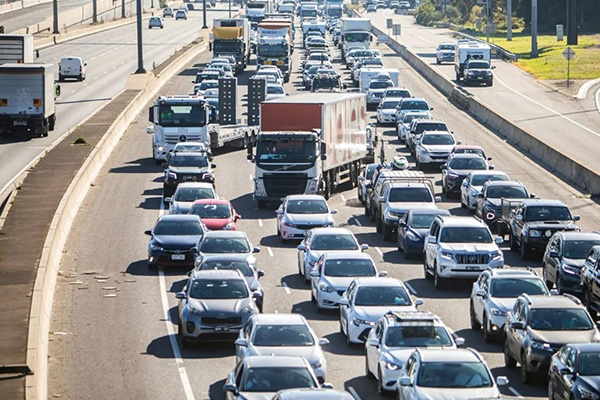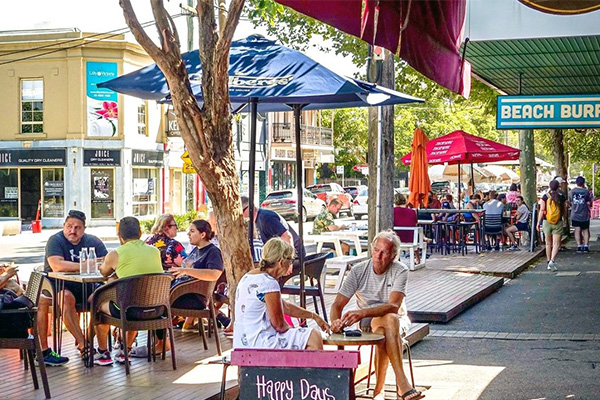New findings on tail pipe and tyre dust emissions have health experts extremely worried
Exhaust fumes and tyre wear particles contribute significantly higher levels of air pollution than previously thought. Patrick Hatch’s article on The Hidden Road Toll points to studies showing that “rates of heart disease, lung cancer, stroke, diabetes, childhood asthma and early death caused by road pollution have been vastly underestimated.” The revised estimate of 11,000 deaths in Australia every year is 5 times higher than previously thought and 10 times than the number killed in road crashes.
Australia remains a dumping ground for dirty cars and this problem will intensify as the rest of the world accelerates the transition to electric vehicles and micromobility (Image: Scott McNaughton)
But EVs are not necessarily the answer
Small particles separate from tyres become airborne and can be inhaled deep into the lungs. Larger particles get washed or blown into rivers and seas to re-enter the biosphere and our food chain. Additionally, a recent NZ study into the effects of NO2 from tail pipe exhaust provoked a stark readjustment of the Australian road toll. Both countries have similar road policies and legislation. And both are dumping grounds for dirtier cars. If anything, Australian pollution control standards may indicate an underestimation of the problem.
Whilst these findings have sparked a call to accelerate the roll out of EVs, the problem of tyre dust particles remains. E-bikes however are ten times safer and less polluting which is why Bicycle NSW is calling for
e-bike subsidies now.
Reviewing the (visible) safety hazards on an inadequate shared path adjacent to the Warringah Freeway. A hellish location for both traffic safety and pollution (Source: Bicycle NSW)
The crushing weight of numbers points to a structural problem that can’t be ignored
- Australian road deaths for 2022 = 1,187 people.
- Current estimated premature death toll due to vehicular emissions = 11,105 people.
- Total road deaths for 2022 = 12,292 people.
Road deaths are preventable, so why no action?
To drive the point home, the fatal road toll for 2022 almost equals the total COVID death count since the start of the pandemic. But get this: 20 times more Australians were killed on our roads last year than in all the wars since Vietnam!
Whilst pandemics, wars and work injuries propel major structural changes, death and disability due to road trauma and pollution remains ignored. Such paradoxes highlight motor normativity or ‘car-brain’ policy making and planning. For instance, whilst it is prohibited to smoke in a classroom or locate fake stone benchtop factories near schools, deadly traffic conditions abound. In addition, the same peer reviewed modelling estimates that road pollution also contributes to 12,210 cardiovascular hospitalisations, 6,840 respiratory hospitalisations, and 66,000 childhood asthma cases every year.
Radiator Springs in happier times! (Source: Pixar Post)
Our 80-year abusive relationship
We love cars. They’re so shiny and convenient, they make us feel powerful and free. But in an 80-year process, our streets have devolved from places for people to places dominated by cars. To the point where we fear for our lives and our kids when walking and riding. But we still love them.
No.1 in The Top 10 Manliest Cars, the Nissan GTR The media continues to feed our collective desire for very expensive shiny cars (Source: Menswear Style)
We now have Active Transport and Future Transport strategies which prioritise pedestrians and cyclists over private cars. But without corresponding policies like Road User Space Allocation made law, decision makers will defer to traffic engineers. As they have always done.
‘We have everything we need to build better, safer and more beautiful streets’
“Whether you walk, ride or roll, we all have the right to move around safely. And at the moment, its 80% car dominated. In order to get there, road space needs to be shared fairly,” says Bicycle NSW CEO Peter McLean.
A Better Street has space for people to linger and participate in community life. Traffic is slow and there is seating and shade (Source: Better Streets)
What can you do?
- Join the Better Streets coalition and get active for better, safer, more beautiful streets for everybody.
- Walk and ride more, drive less.
- Join a BUG or form a BUG (What even is a BUG?)
- Join Bicycle NSW. If you have the coin, donate to the environmental trust which funds our advocacy campaigns for safer infrastructure.






